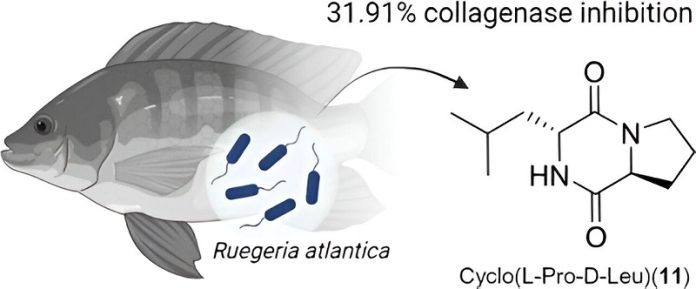
When it comes to skin care products, some ingredients might sound a bit strange, but they can work wonders.
One unusual example is snail mucin, or snail slime, which is known for its moisturizing and anti-aging effects.
But researchers may have found an even weirder ingredient: molecules made by bacteria found in fish guts.
Scientists from Korea recently discovered that certain compounds produced by bacteria in the guts of two fish species—the red seabream and blackhead seabream—could have skin-brightening and anti-wrinkle benefits.
This research was published in the journal ACS Omega, and it could lead to fish gut bacteria becoming a part of your future skin care routine.
While fish guts might seem like an odd place to look for beauty products, it’s not such a wild idea.
After all, many important medicines have been discovered in unexpected places. For example, penicillin, a life-saving antibiotic, was found in mold, and a potential cancer drug called Marizomib was discovered in ocean sediments.
In this new study, researchers Hyo-Jong Lee and Chung Sub Kim explored the gut bacteria of the red seabream and blackhead seabream, which are fish found in the western Pacific Ocean. Although these microbes were identified years ago, no one had looked at the compounds they produce until now.
The research team identified 22 different molecules made by these bacteria. To see if any of them had cosmetic benefits, the scientists tested the compounds on mouse cells grown in the lab.
They were particularly interested in how these molecules affected two enzymes—tyrosinase and collagenase.
Tyrosinase is responsible for producing melanin, which can lead to dark spots and uneven skin tone, while collagenase breaks down collagen, the protein that keeps skin firm and wrinkle-free.
Out of all the molecules they tested, three from the red seabream bacteria were the most effective at blocking both enzymes without harming the cells. This means these molecules could potentially be used in future skin care products to brighten skin and reduce wrinkles.
While it may take some time before fish gut bacteria appear in your face cream, this discovery shows that the beauty industry is always on the lookout for new and unexpected ingredients.
One day, these tiny molecules from fish might help keep your skin looking youthful and radiant.
Fish Guts: The Surprising New Ingredient for Future Skin Care
When it comes to skin care products, some ingredients might sound a bit strange, but they can work wonders. One unusual example is snail mucin, or snail slime, which is known for its moisturizing and anti-aging effects. But researchers may have found an even weirder ingredient: molecules made by bacteria found in fish guts.
Scientists from Korea recently discovered that certain compounds produced by bacteria in the guts of two fish species—the red seabream and blackhead seabream—could have skin-brightening and anti-wrinkle benefits. This research was published in the journal ACS Omega, and it could lead to fish gut bacteria becoming a part of your future skin care routine.
While fish guts might seem like an odd place to look for beauty products, it’s not such a wild idea. After all, many important medicines have been discovered in unexpected places. For example, penicillin, a life-saving antibiotic, was found in mold, and a potential cancer drug called Marizomib was discovered in ocean sediments.
In this new study, researchers Hyo-Jong Lee and Chung Sub Kim explored the gut bacteria of the red seabream and blackhead seabream, which are fish found in the western Pacific Ocean. Although these microbes were identified years ago, no one had looked at the compounds they produce until now.
The research team identified 22 different molecules made by these bacteria. To see if any of them had cosmetic benefits, the scientists tested the compounds on mouse cells grown in the lab. They were particularly interested in how these molecules affected two enzymes—tyrosinase and collagenase. Tyrosinase is responsible for producing melanin, which can lead to dark spots and uneven skin tone, while collagenase breaks down collagen, the protein that keeps skin firm and wrinkle-free.
Out of all the molecules they tested, three from the red seabream bacteria were the most effective at blocking both enzymes without harming the cells. This means these molecules could potentially be used in future skin care products to brighten skin and reduce wrinkles.
While it may take some time before fish gut bacteria appear in your face cream, this discovery shows that the beauty industry is always on the lookout for new and unexpected ingredients. One day, these tiny molecules from fish might help keep your skin looking youthful and radiant.
Source: American Chemical Society.



